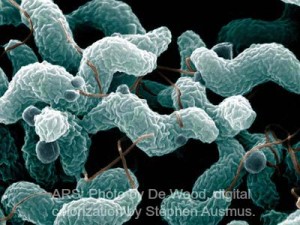 The number of reported cases of campylobacteriosis in the European Union rose for the sixth straight year in 2014, according to the latest annual report by European Food Safety Authority and European Centers for Disease Control and Prevention (ECDC).
The number of reported cases of campylobacteriosis in the European Union rose for the sixth straight year in 2014, according to the latest annual report by European Food Safety Authority and European Centers for Disease Control and Prevention (ECDC).
In 2014, Campylobacter was the most commonly reported source of food poisoning bacteria in the European Union. There were 236,851 cases reported, a 9.6 percent increase from 2013. It was the sixth straight year that the number of confirmed cases rose.
Campylobacter is bacteria that is transferred via the fecal-oral route, meaning those who develop Campylobacter infections have ingested microscopic amounts of animal feces. In the E.U., most cases were associated with broiler chicken meat. Of 6,703 samples of fresh broiler meat tested, 38.4 percent were positive for Campylobacter.
Unpasteurized milk was also a major source Campylobacter infections. Campylobacter was detected in up to 16.7 percent of raw milk batches tested.
Symptoms of campylobacteriosis include diarrhea, abdominal cramps, and fever. Most people with an infection recover on their own. However, for some people it can cause a serious, life-threatening infection. A small percentage of people may develop reactive arthritis which causes joint pain and swelling after infection. Or, they may develop Guillain-Barre Syndrome, a condition that causes weakness and paralysis which can occur several weeks after the initial illness.




